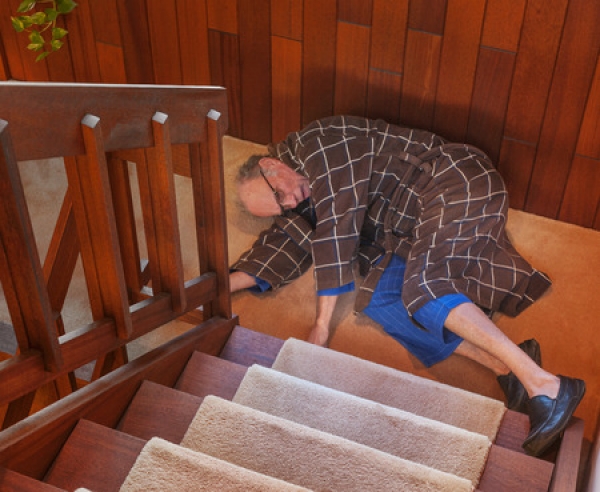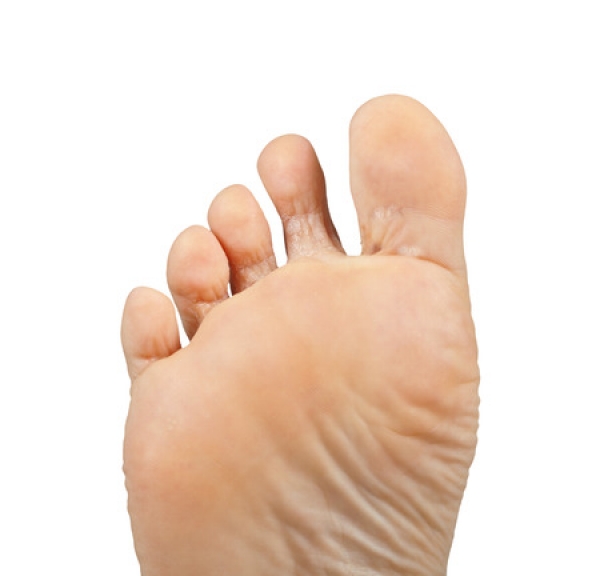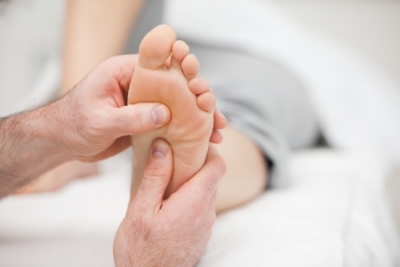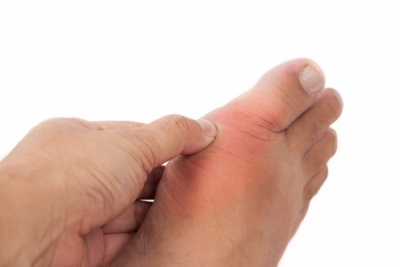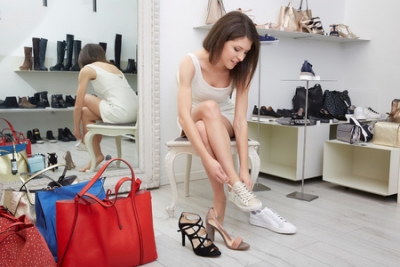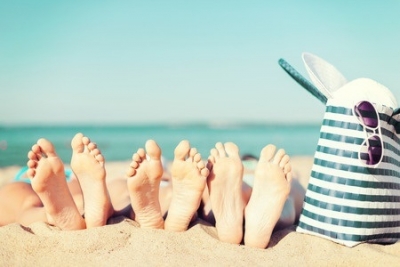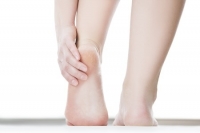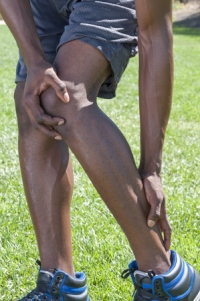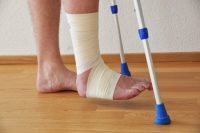Connect With Us
Blogs
Blog
Children categories
Each year a quarter of all adults 65 and older fall. For some this will mean a serious injury that leads to disability or even death. For others, the injury isn’t so much physical as mental as they become fearful and depressed and unwilling to life the active lifestyle they once loved. In honor of Falls Prevention Day which occurs on September 22nd, we at Superior Foot & Ankle Center want to let patients know that they can decrease the risk of falling. Here’s how:
Build up strength and balance—regular exercise—walking being one of the best options—helps keep muscles and bones strong and keeps ligaments and tendons flexible. Feet that are functioning well are less likely to stumble. There are also several types of exercise, such as Tai Chi, that specifically focus on increasing balance. Look for one in your community.
Eat for strong bones—talk to your doctor about your bone density. It is now known that many people don’t fall and break a hip, but rather the hip breaks and they fall. Your doctor can tell you how much calcium you should have on a daily basis. Diets rich in dairy products, leafy greens (like spinach and kale) and certain fish (sardines, salmon, perch) will help you reach your daily calcium goal. Fortified juices and cereals as well as calcium supplements are also available.
Do a home inspection—take a walk through your home with a critical eye for fall hazards. Clear clutter from the floors, remove loose throw rugs and be sure stairs have railings on both sides. Bathrooms should have rails for showers and toilets if necessary and non skid treatments on the floor of the shower and tub. Be sure all areas of the home are well lit (inside and out).
Don’t procrastinate when it comes to healthcare—stay current with medical appointments. Regular eye exams will reduce the risk of falls due to poor vision. Keeping with your schedule of medical appointments will help ensure that your medications are appropriate for your weight and condition and that there are no interactions between prescribed drugs that can cause dizziness or blurred vision.
Of great importance is not putting off making an appointment with our podiatrists, Dr. Victoria Foley and Dr. Constance Omelas, at our Long Beach office if you are experiencing foot, toe or ankle pain, as well as monitoring existing podiatric conditions. Discomfort in the lower extremities can cause you to compensate and walk in unnatural ways that can lead to trips and falls. Contact us by calling: 562-420-9800.
Although the risk for athlete’s foot is high during the summer due to the fact that patients go barefoot more often in public places, at Superior Foot & Ankle Care Center we see just as many cases as we move into the fall. Part of the reason for this is that the fungi that causes this infection (also known as tinea pedis) love warm, moist, dark places—like inside closed shoes and sweaty socks.
How do You Know if You Have It?
The symptoms of athlete’s foot are severe itching, burning and redness, along with dry scaly skin. The infection often begins between the toes but can also develop on the arches, soles or the sides of the feet. Left untreated, blisters may form and the condition can progress from annoying to painful. What’s tricky, however, is that the symptoms of athlete’s foot can mimic other conditions, such as psoriasis. In addition, there are different fungi that cause athlete’s foot, which may affect treatment. For those reasons, it’s important to get a skin rash on your foot looked at sooner rather than later. Our podiatrists, Dr. Victoria Foley and Dr. Constance Omelas will examine the skin on your feet and make an accurate diagnosis of the condition.
Treatment and Prevention
Both topical ointments as well as oral medications are available to treat athlete’s foot. The foot doctor will prescribe the treatment that will be most effective depending on the type and severity of your infection. Of course, the best scenario is not to get athlete’s foot in the first place! Some tips for avoiding athlete’s foot include:
- Do not share shoes, socks, towels or any other items that touch another person’s feet.
- Keep your feet from coming in contact with fungus by wearing shower shoes or flip flops in gyms, locker rooms, showers and other public places where people walk barefoot.
- Keep feet dry. Change your socks more than once a day if you tend to perspire heavily.
- Wash feet daily and dry completely, being sure to get the space between the toes. Apply a foot powder before putting on socks to help keep feet dry.
If you are concerned that you may have contracted athlete’s foot, contact our Long Beach office for an appointment by calling: 562-420-9800.
Most of the time we don’t think much about our toes. They are, however, quite necessary for providing the balance and assistance needed to support the weight of your body and for common activities like walking and running. At Superior Foot & Ankle Care Center we find patients pay attention to their toes when they hurt and stop functioning as they should. Below are some common reasons for toe discomfort:
Hammertoes—with this condition, which can be caused by a genetic muscle problem, faulty foot mechanics or an abnormal bone length, one or more toes curls downward causing the namesake “hammer” appearance. In the early stages, the toes remain flexible but if left untreated they will become rigid, unable to be straightened. Corns, calluses and more severe disability can occur. There are a number of conservative and surgical treatment options available depending on the severity and progression of hammertoes.
Toe Spurs—this is a bone spur that occurs in your toe. It may form as part of another foot problem and can cause quite a bit of pain when walking. Usually a minimal incision surgery is needed to eliminate the spur.
Curled Fifth Toe—usually an inherited condition, the pinky toe curls downward and moves under the next toe. This results in your bearing weight on the side of your toe instead of the bottom—ouch! In addition, curled fifth toes cause nail problems and corns. This problem can be surgically corrected.
Turf Toe—this is actually a sprain of the joint at the base of the big toe. It is usually caused by a sudden pushing off injury or a “jamming” of the toe, such as when a player’s foot gets stopped on artificial turf but the rest of the body continues moving forward. Turf toe can also be caused or exacerbated by repetitive pushing off actions common to sports such as football.
As you can see, the causes of toe trouble are varied and the treatment will depend on the diagnosis. For this reason it’s essential that you let one of our podiatrists, Dr. Victoria Foley and Dr. Constance Omelas, examine your toes and find out the cause of your pain. To get relief from your toe pain contact our Long Beach office sooner rather than later for an appointment by calling: 562-420-9800.
Chances are if you haven’t had sesamoiditis, you may not have any idea what it is. However, at Superior Foot & Ankle Center we often find that for patients suffering from pain in the ball of the foot, sesamoiditis is the cause.
What are Sesamoids?
Sesamoids are a unique structure in the body. They are tiny bones that are embedded in a tendon and are not connected to other bones. They are only found a few places in the body and your feet are one of them. Two sesamoids are located on the bottom of your foot at the base of the big toe. They act kind of like pulleys in the tendon, enabling it to move more easily and helping the big toe with pushing off.
Too Much Pressure
Due to their location and function in the foot sesamoids are exposed to excessive amounts of pressure and force. They can become over stressed or even injured from activities such as running and other sports, dancing, jobs that require you to be on your feet all day and having high arches or wearing high heels frequently. When the sesamoids become inflamed and irritated that is the condition of sesamoiditis.
Diagnosis and Treatment
In addition to pain in the ball of the foot, patients with sesamoiditis may also experience pain at the base of the big toe as well as swelling and bruising in that area. The big toe may be stiff and difficult to bend. Our podiatrists, Dr. Victoria Foley and Dr. Constance Omelas, will want to examine your foot, paying particular attention to the big toe. Digital x-rays (which can be done right in our Long Beach office) and other imaging studies may be needed to confirm the diagnosis.
There are a number of treatment options available for sesamoiditis, depending on the extent of the condition, including:
- Over the counter anti-inflammatory medications or steroid injections to help reduce pain, swelling and inflammation
- Bracing, taping or strapping the toe to relieve pressure and allow healing
- Wearing soft-soled, low-heeled, cushioned footwear.
- Orthotics
- Physical therapy
If you are experiencing symptoms of sesamoiditis, stop any activities that cause pain and contact us for an appointment by calling: (562) 420-9800.
Did you know that August 17th is National I Love My Feet Day? At Superior Foot & Ankle Center we can think of no better way to tell your feet you care then by buying shoes that fit properly and are good for your feet. Many common foot problems can be avoided by wearing the correct shoes for your feet. Here are some tips on shoe shopping:
- Buy shoes based on quality of construction and materials that are designed for the health of your feet not on fads and appearance.
- Be sure any shoes you choose take current foot problems you have into consideration. At your next checkup with our podiatrists, Dr. Victoria Foley and Dr. Constance Omelas, ask if there are special features you should look for or avoid when buying shoes. In many cases, such as with bunions, hammertoes, flat feet or high arches, the foot doctor can make recommendations about shoe design that will decrease discomfort and help prevent a foot condition from getting worse. In some cases, a custom orthotic device may help shift pressure away from an area that hurts. If the podiatrist prescribes an orthotic be sure to bring it with you to try on with the shoes you are considering buying.
- Get your feet professionally measured. Feet can change size as you age. It’s not uncommon to find that one of your feet is larger than the other. You should always buy shoes to fit the bigger foot. Also, don’t assume once you know your size that you all brands will fit the same. Always try on shoes before purchasing.
- Heel heights of 1 inch or less are best. The higher the heel, the more pressure that is exerted on the forefoot. Avoid pointy shoes and those with narrow toe boxes.
- Shop for shoes at the end of the day. That’s when your feet are their largest and most swollen.
- Run your hand around the inside of both shoes to be sure there is no loose stitching or rough spots that might rub on your skin.
- Don’t rush! Try on both shoes and take some time to walk around the store to make sure that shoes fit well and are comfortable from the moment you leave the store.
If you have questions about other foot health care issues contact our Long Beach office by calling: 562-420-9800.
If you’re packing for a summer trip, your feet may not be the first thing on your mind, but at Superior Foot & Ankle Care Center we want to remind patients that if your feet are hurting on vacation, you won’t enjoy yourself. The good news is your feet won’t need their own bag, just a few small items that can have a big impact on comfort, health and safety of your feet. Here’s what to bring:
- Moleskin—it’s a good idea not to bring brand new shoes that you haven’t worn before on a vacation. Chances are you’ll be doing more walking than usual and when you’re away from your closet is not the ideal time to discover that the shoes you brought are uncomfortable. Sometimes, however, even previously comfortable shoes can start to rub if it’s especially hot and your feet are sweaty from the increased activity. Moleskin can save the day. Put a small piece on the part of your foot that is feeling irritated and it will hopefully help you get through the day without a blister. Of course, you should still change your shoes as soon as possible.
- Sunscreen—this is probably already in your travel bag, but make sure you remember to apply it to the tops and bottoms of your feet as frequently as you apply to the rest of your body. Don’t forget to reapply after swimming.
- Emery board and nail clippers—a rough nail can become torn and painful. Keep an emery board with you for filing and bring along your nail clippers too. Remember to clip toenails straight across to help prevent ingrown nails from forming.
- Extra socks—if your feet tend to sweat excessively or you know you’ll be in a warm place where you’ll be doing activities like hiking or sightseeing, change your socks as soon as you feel that your feet are damp. This will help prevent a case of athlete’s foot from becoming your vacation souvenir. Fungal and bacterial infections thrive in dark, damp places.
- Flip flops—use these around the pool or at the beach to prevent feet from coming in contact with fungi in public places. Don’t wear these as your everyday shoes however, or you risk injury and other painful foot conditions such as plantar fasciitis and flat feet.
If you do injure your foot while you are away be sure to seek treatment promptly and follow up by contacting our Long Beach, CA office for an appointment when you return. Our podiatrists, Dr. Victoria Foley and Dr. Constance Ornelas will want to check your foot and be sure that it is healing properly.
August is Psoriasis Awareness Month and at Superior Foot & Ankle Care Center we want to offer our patients some information about this disease and how it affects your feet. Psoriasis is a chronic autoimmune condition that affects approximately 7.5 million Americans. In patients with psoriasis, skin cells are produced at an overabundant rate and cause red, scaly, itchy patches to form on the skin. There are two forms of psoriasis that most commonly affect your feet. One type causes the skin on your feet to become dry and scaly, the other, more severe, can also include pustules (blisters).
Triggers and Treatment
It’s important any time you see changes in the skin on your feet that you have one of our podiatrists, Dr. Victoria Foley and Dr. Constance Ornelas examine you. Psoriasis symptoms can mimic athlete’s foot and other conditions. If the foot doctor believes you have psoriasis, there are topical ointments and steroids that can be used on your feet to treat the condition. The foot doctor will also want to refer you to a doctor who specializes in psoriasis as this is a systemic disease that will require additional medical management.
While it’s estimated that 10% of the population are genetically predisposed to psoriasis, only 2-3% of those actually get the disease. Researchers believe that there are specific triggers that can cause psoriasis to flare up. Some steps you can take to avoid these include:
- Not smoking
- Limiting alcohol intake
- Consulting with your doctor about other medications you are taking (some given for high blood pressure, heart disease and depression may be triggers)
- Find ways to manage and reduce stress
- Wear comfortable shoes with adequate padding on the soles
- Protect your feet from injury and infection
Psoriasis is not contagious. If affects men and women at equal rates and most often develops between the ages of 15-35. If you are experiencing any unusual skin changes or symptoms, contact our Long Beach, CA office for an appointment today by calling: 562-420-9800. Most foot conditions will get worse, not better, if left untreated.
One of the trickier areas to diagnose that we see at Superior Foot & Ankle Care Center is pain in the calf. This symptom can point to a variety of disorders, some more serious than others. The only way to definitively find out what’s causing the pain is to make an appointment at our Long Beach office. Our podiatrists, Dr. Victoria Foley and Dr. Constance Omelas will do a complete lower extremity examination and also get your medical history to help track down the source of calf pain. Some possibilities include:
Exercise or Injury—the most obvious and least threatening cause of calf pain is muscle pain due to exercise. If you have recently started a new fitness routine or sport, some soreness may be normal. Pain that lasts more than a few days, however, or that is severe requires medical attention. Injuries to calf muscles or to the Achilles tendon are possible in cases where patients do too much too soon or suddenly ramp up their exercise program.
Dehydration—did you know that most of us are walking around in a state of chronic dehydration? Unless you drink half your body weight in water each day, you may be among the dehydrated. With extra sweating in the summer months the risk increases. One of the signs of dehydration is cramping in the calf. Sometimes cramps will occur at night and wake you up.
Other Foot Disorders—sometimes a pain in the calf is not about the calf at all. It can be a symptom of a foot or ankle problem such as flat feet or Equinus.
Deep Vein Thrombosis (DVT)—this is a blood clot that forms deep in the calf. It is more common if you have had surgery recently or been on an airplane. This is a potentially dangerous condition and if you believe there is any possibility of DVT you should contact the foot doctor immediately.
Peripheral Vascular Disease—poor circulation to the legs and feet, which are characteristic of this disease (and other conditions, such as diabetes, that affect the circulatory system), can result in calf pain, especially when you sit with your legs up or when walking.
If you have been experiencing consistent calf pain, contact us by calling: 562-420-9800.
Blisters are a minor foot problem that can cause a major pain and definitely put a temporary crimp in your summer activities. Blisters occur more frequently in the hot months because they are caused by the friction of your socks or shoes rubbing against your skin. Sweat increases friction and hence, more blisters. At Superior Foot & Ankle Care Center we would like to offer some tips for preventing and treating blisters:
- Keep feet dry. As soon as you notice your feet are damp, change your socks. If you tend to sweat profusely, use a foot powder. In addition to blisters, damp feet can be the perfect breeding ground for fungal and bacterial infections.
- Buy shoes that fit properly. The idea that shoes need a breaking in period is a myth. Shop for new shoes at the end of the day—that’s when feet are most swollen. Also, it’s best to not bring a brand new pair of shoes on vacation where you’ll be doing a lot of walking.
- Pack moleskin for your summer vacation. If you begin to feel a sore spot on your heel or toes, cover with a piece of mole skin and change your shoes as soon as you are able to.
- If a blister does form, do not pop it. Cover with a bandage to prevent further irritation. Your body will naturally reabsorb the fluid.
- Should a blister open on its own, wash it with soap and water only. Then apply a small amount of antibacterial ointment and cover with a bandage. Do not cut or tear the open skin. The risk of infection is greatly increased with the skin being open and exposed.
For the most part, blisters are not a medical threat unless they become infected. In that case, you will notice pus or other drainage and potentially a foul odor coming from this blister. If this occurs or the blister appears to be filled with blood, contact our Venice office at: (562) 420-9800. One of our podiatrists, Dr. Victoria Foley or Dr. Constance Ornelas will need to examine your blister and determine if an infection or other problem has developed.
It’s a fact, 75% of all people will experience a serious foot problem at some point during their life. In many cases, whether due to injury, disease, a foot or toe deformity or other condition, surgery may become necessary to ensure a fully mobile and active lifestyle for the patient. At Superior Foot & Ankle Care Center we try to take the mystery out of surgery by providing our patients with as much information up front as possible. Here are some of the key areas you need to know about before you have surgery:
The Procedure—our podiatrists, Dr. Victoria Foley and Dr. Constance Omelas will take the time to explain your surgery from start to finish. We know that you’ll want to find out if the surgery will be done in the office or a surgical center and whether it’s outpatient or if you’ll require an overnight stay. Most often patients will need someone to drive them home after the procedure. Other concerns include the type of anesthesia that will be used and how long the procedure will take to complete.
The Recovery—questions you’ll want to ask include: how much pain will I be in and what measures will be available to minimize the discomfort? How long before I can bear weight, walk, drive, resume normal activities? Will I need to schedule physical therapy or other appointments following the surgery?
Preparing Your Home—depending on the type of surgery and the recovery you may need some assistance at home initially. You may also need to make some modifications: if your bedroom is on the second floor consider temporarily relocating to the lower level. If you will have a knee scooter, crutches or other assistive devices you will need a clear pathway to the bathroom, kitchen and other areas that are essential to get to. Determine what items (laptop, medications, water, TV remote, etc.) you’ll want within reach and set up an accessible bedside table to hold these items.
Setting up Your Calendar—find out how long you’ll be off your feet and schedule work and family life accordingly. If there are appointments that need to be kept or tasks that have to be completed while you recuperate put the right people in place to handle them so you do not have to worry about them. If possible, schedule physical therapy appointments before your surgery and be sure all recurring tasks—grocery shopping, paying bills, etc. are handled before your surgery.
Having the information about what will happen before, during and after your surgery and the opportunity to put plans in place to make the whole situation go smoothly will go a long way to reducing anxiety. If you have any concerns whatsoever, please contact our Long Beach office by calling: 562-420-9800.
More...
Chances are with the end of the school year your child came home with readings lists and other summer work. At Superior Foot & Ankle Care Center we’d like to add one more list: a checklist for taking care of your child’s feet over the summer months. Summer brings a whole new set of activities and options for children, many of which can lead to foot trouble if the proper precautions are not taken. Here are our top tips for keeping children’s feet healthy this season:
Slather on the Sunscreen—many people forget to apply sunscreen to their feet. The skin on your feet is just as susceptible to the harmful effects of UVB and UVA rays as that on the rest of your body. On beach and pool days you should put sunscreen on the tops and bottoms of your children’s feet and reapply after swimming. If your children are wearing sandals or other open shoes and will be out in the sun shopping or sightseeing you should also put sunscreen on their feet then.
Pack the Flip Flops—summertime is high season for athlete’s foot, fungal toenails and warts, all of which are spread by direct contact with the virus, fungi or bacteria that cause them. If you are spending time at a community pool or local beach make sure your child keeps their feet covered around the pool and in changing areas and bathrooms—these are prime hangouts for fungal infections. Encourage your children not to share shoes, socks, towels or any items that touch someone else’s feet.
Inspect Shoes—be sure that your child is wearing shoes that match the activity they are participating in. While flip flops are good for the pool, they can lead to injury if used for playing whiffle ball or other casual summer sports. Also keep an eye on fit—children’s feet grow fast and time spent squeezed into shoes that are too tight can increase the risk of ingrown toenails and fungal infections.
Keep it Clean—wash your children’s feet at the end of every day with a mild soap and warm water. Be sure to dry completely as well, especially between the toes. Trim toenails straight across with no curved edges. If your child’s feet sweat excessively, consider a foot powder to help keep them dry.
If when caring for your child’s feet you notice anything unusual or concerning, or if your child complains of foot pain, don’t hesitate to contact our podiatrists, Dr. Victoria Foley and Dr. Constance Omelas at our Long Beach office by calling 562-420-9800. It’s always better to get a foot concern checked than to wait and have it develop into a serious issue. Enjoy the summer and keep your children’s feet safe!
When’s the last time that you took a good look at your feet? At Superior Foot & Ankle Care Center, we believe regularly examining your feet is a key component of good foot health. In addition, your feet are the part of your body where several systemic conditions such as diabetes, arthritis and peripheral neuropathy may first exhibit symptoms. You can examine your feet in as little as 10 minutes. Ready, set, go:
- Start by standing with your feet together and look down at them. Do you notice any difference between your two feet in size or shape? Is there any swelling in your ankles or feet?
- Now sit down so you can get a closer look at each foot. Examine the top, bottom and sides of your feet as well as between your toes. If you see any cuts or wounds make sure they are clean and appear to be healing. Check your skin. Do you notice any redness, dry flaky skin, rashes or bruises? Do you have any unusual freckles or moles that appear to have changed since the last time you looked at them? Do you see any lumps, growths, warts or new calluses?
- Examine your toenails. Nails that are discolored, thick or crumbling at the edge may indicate a fungal condition. A bluish or purplish tinge to the skin under your nails is a possible sign of a circulation issue.
- While you’re seated, take a pencil and run the erased end over the top, bottom and sides of your foot. The sensation should be equal in all parts of your foot.
- Lastly, flex your toes and feet. Do you notice any pain or stiffness in your joints?
If you spot anything that doesn’t seem quite right, contact our Long Beach office for an appointment by calling: (562-420-9800). Our podiatrists, Dr. Victoria Foley and Dr. Constance Omelas, will give your feet a complete examination and assess whether you have a foot health issue.
Making this quick foot self-check a part of your monthly health routine will go a long way to preventing foot problems as well as detecting any conditions that do develop in their very earliest stages when treatment is usually less invasive and more effective.
Who doesn’t like showing off one of the season’s newest colors on their toes? Besides, getting a professional pedicure is a relaxing treat. Bacterial and fungal infections, such as athlete’s foot and fungal toenails, however, are not particularly enticing. At Superior Foot & Ankle Care Center we want our patients to be able to enjoy this pampering experience safely and so we have compiled some tips below to help prevent infections.
First, however, it’s important that you inspect your toenails and make sure that you do not currently have any problems. If you have a toenail that is discolored, thick or crumbly, do not attempt to cover it up with nail polish. These may be signs of a fungal infection that requires treatment. If the appearance of one of your nails is concerning you, contact our Long Beach office by calling: (562) 420-9800 and let our podiatrists, Dr. Victoria M. Foley or Dr. Constance Ornelas examine your toenail. Fungal infections will not go away without treatment.
If your nails are all clear and you wish to have a professional pedicure, observe the suggestions here to minimize any risk of fungal or bacterial infections:
- Bring your own nail tools and flip flops. The ideas is to not come in contact with items that have touched other people’s feet. Fungal toenail and bacterial infections are spread by direct contact.
- Look for a license. Reputable salons are licensed by the state, which means they adhere to specific health and sanitary standards. The license should be prominently displayed in the salon.
- Check out the cleanliness of your salon. Foot baths and tools should be cleaned and disinfected after each customer. Nail technicians should wash their hands before starting on a new client and the floors, work stations and rest room should all be clean.
- Refrain from shaving your legs 24 hours before getting a pedicure. Shaving creates tiny cuts in the skin which can allow bacteria to enter. For this reason, if you have any open cuts or blisters on your toes, feet or legs, you should also wait until they have healed before getting a pedicure.
Here are some facts about lawn mower safety that may surprise you: lawn mowers produce three times the kinetic energy of a .357 handgun, with blades that spin at 3,000 revolutions per minute. It’s no wonder that more than 37,000 Americans are the victim of a power mower accident every year. Many of these are foot and toe injuries. At Superior Foot & Ankle Care Center, we want to help our patients keep their feet safe and prevent mower injuries. Below are our top tips:
- Wear the right shoes. Sneakers and sandals will not protect your feet if they come in contact with a mower blade. Work boots or another heavy shoe are the right choice. And, although it seems obvious, mowing barefoot is not a good idea (and yet each year there are patients in the emergency room with injuries because of this!)
- Never mow your lawn right after it rains. Even if it is inconvenient, don’t take a chance of your mowing slipping and losing control of it on slippery, wet grass.
- Keep children away. The two age groups most likely to suffer power mower accidents are children under the age of 14 and adults over 44. No matter how much they beg, do not let children ride in your lap while you are mowing. Also, be sure your children know not to approach you while the mower is running. The noise of the machine makes it difficult to detect that children are nearby.
- Treat any and all injuries immediately. Of course, in case of a major injury you will go to the emergency room. Even more minor injuries, however, such as a cut or a twisted ankle getting on or off the mower needs prompt treatment. If you have injured yourself mowing in a non-emergent way, call our Long Beach office to make an appointment at: (562) 420-9800. Our podiatrists, Victoria M. Foley or Dr. Constance Ornelas will conduct a complete examine of your feet and determine the best course of treatment for your injury. Remember that lawn mower blades are dirty, which creates a higher risk of an infection developing in a cut from a mower blade. Look for signs of infection: pus, redness or warmth around the injured area and fever. Report these to us immediately.

